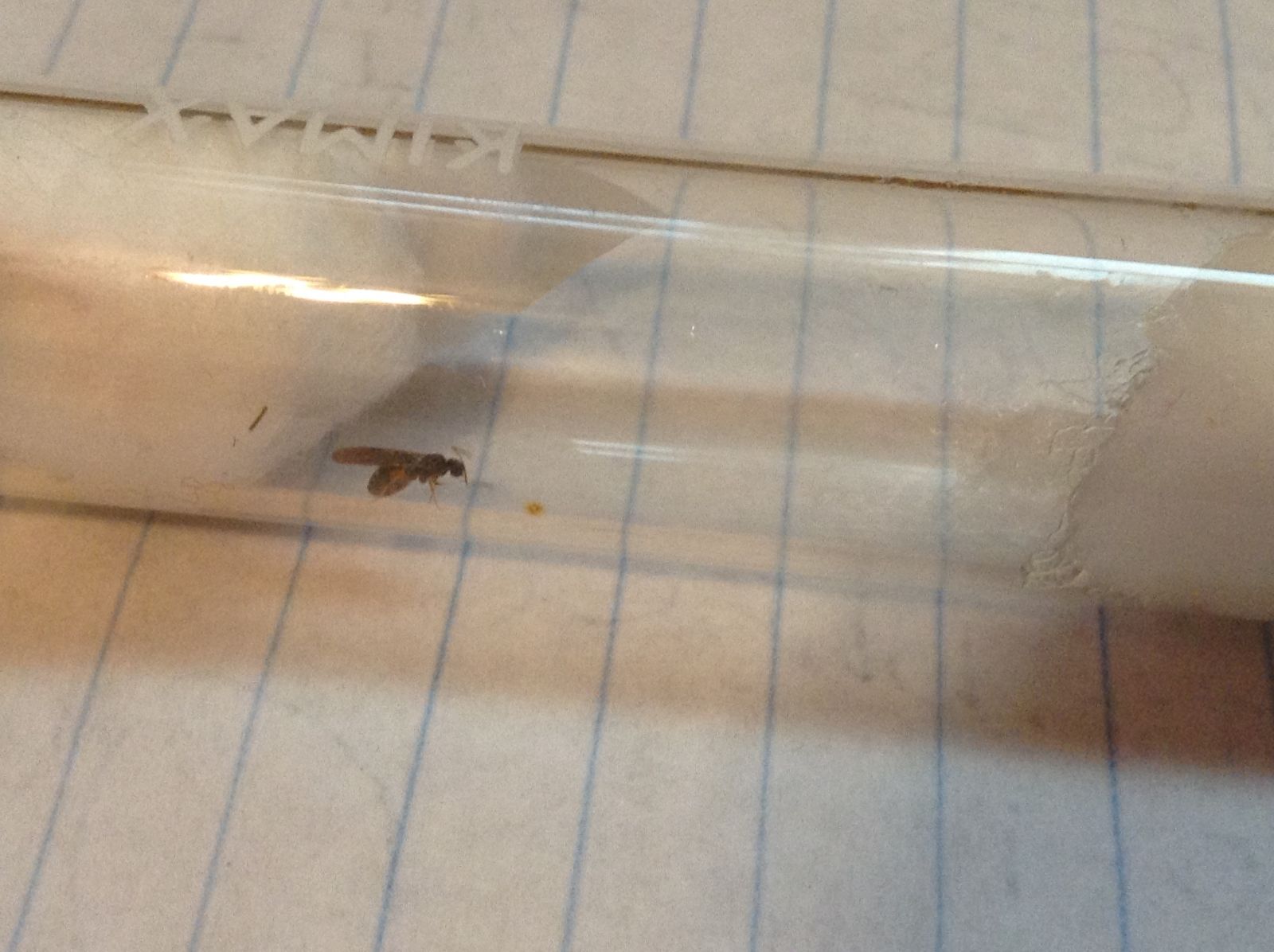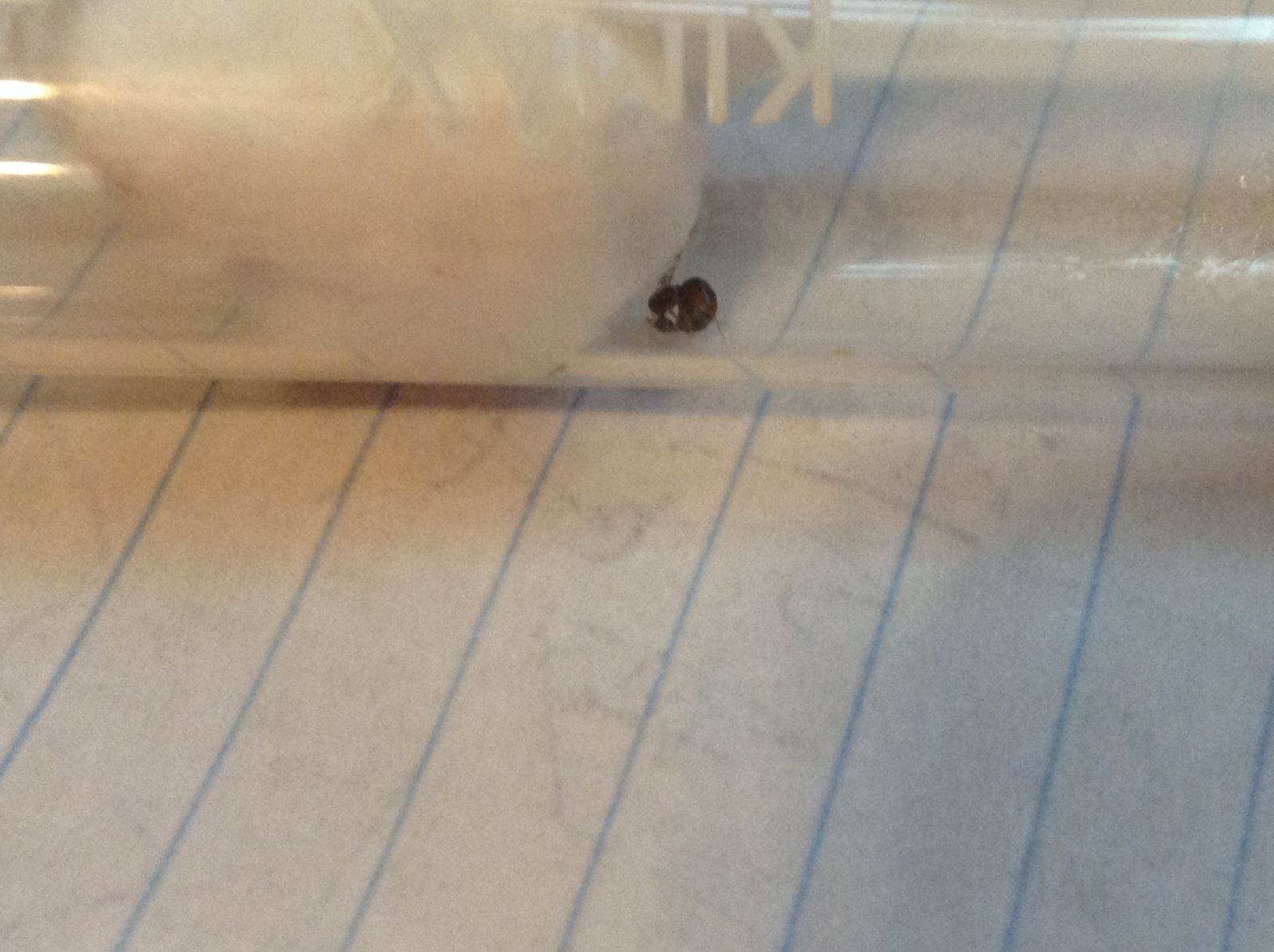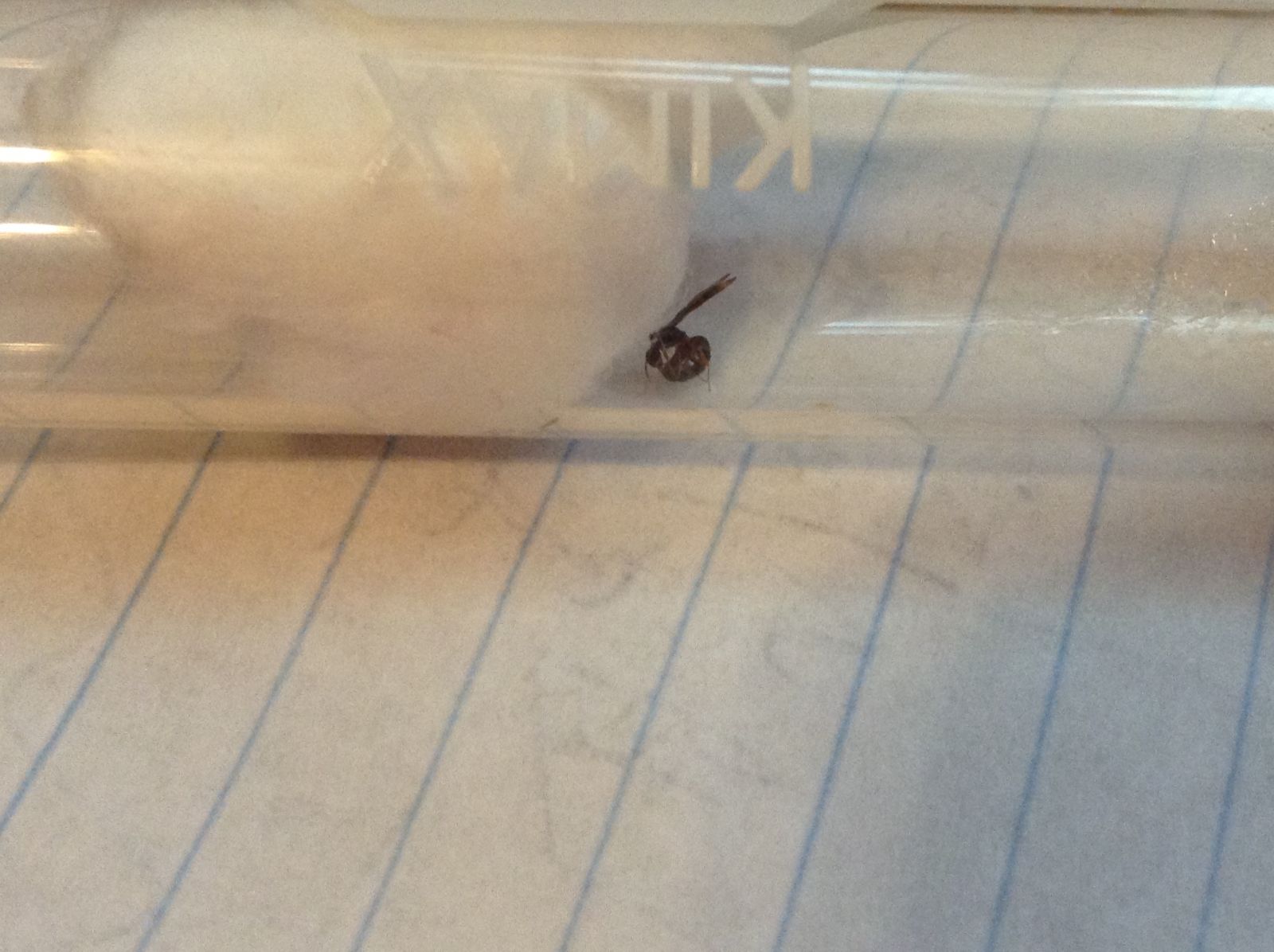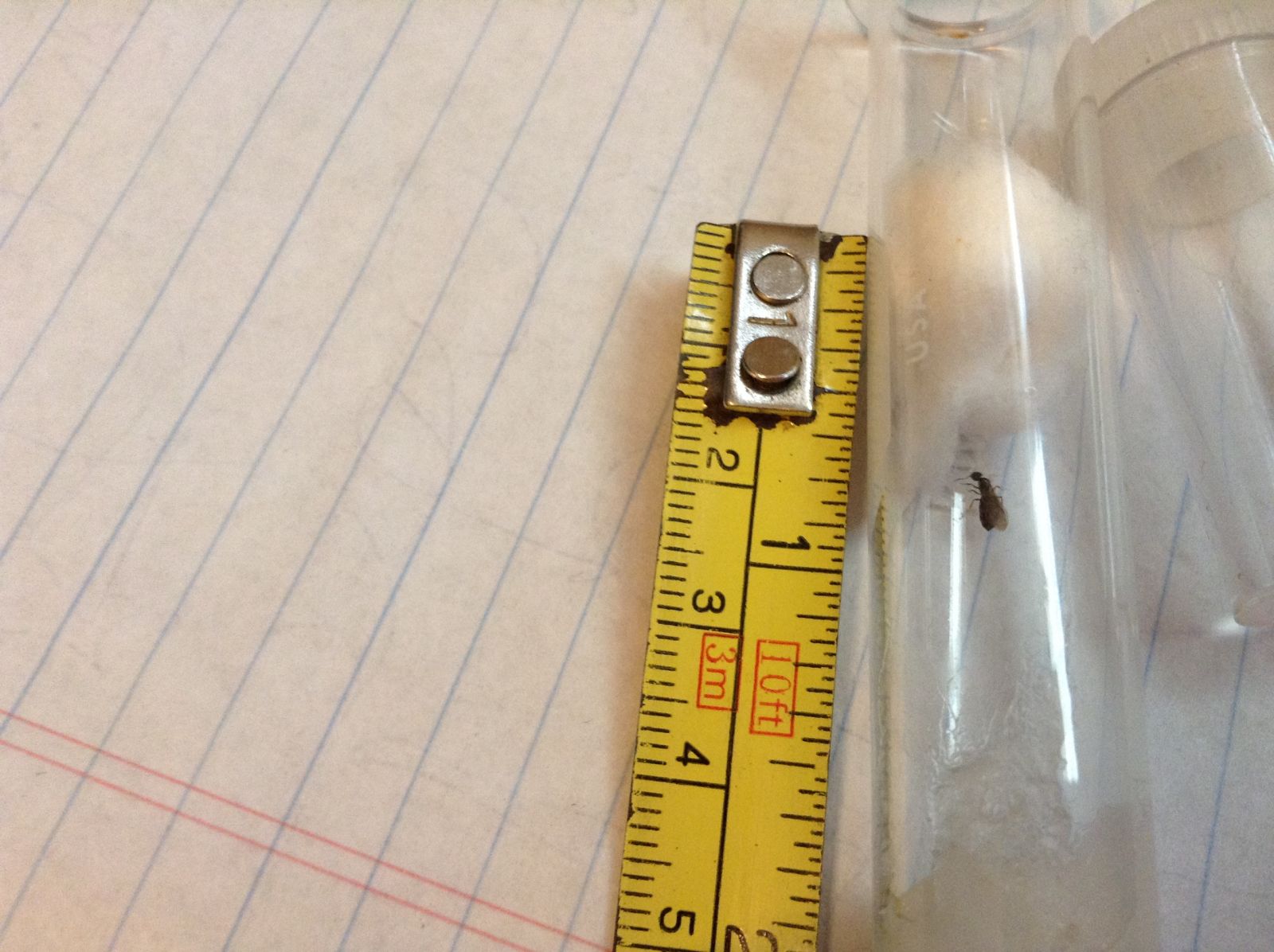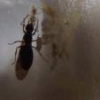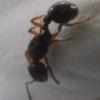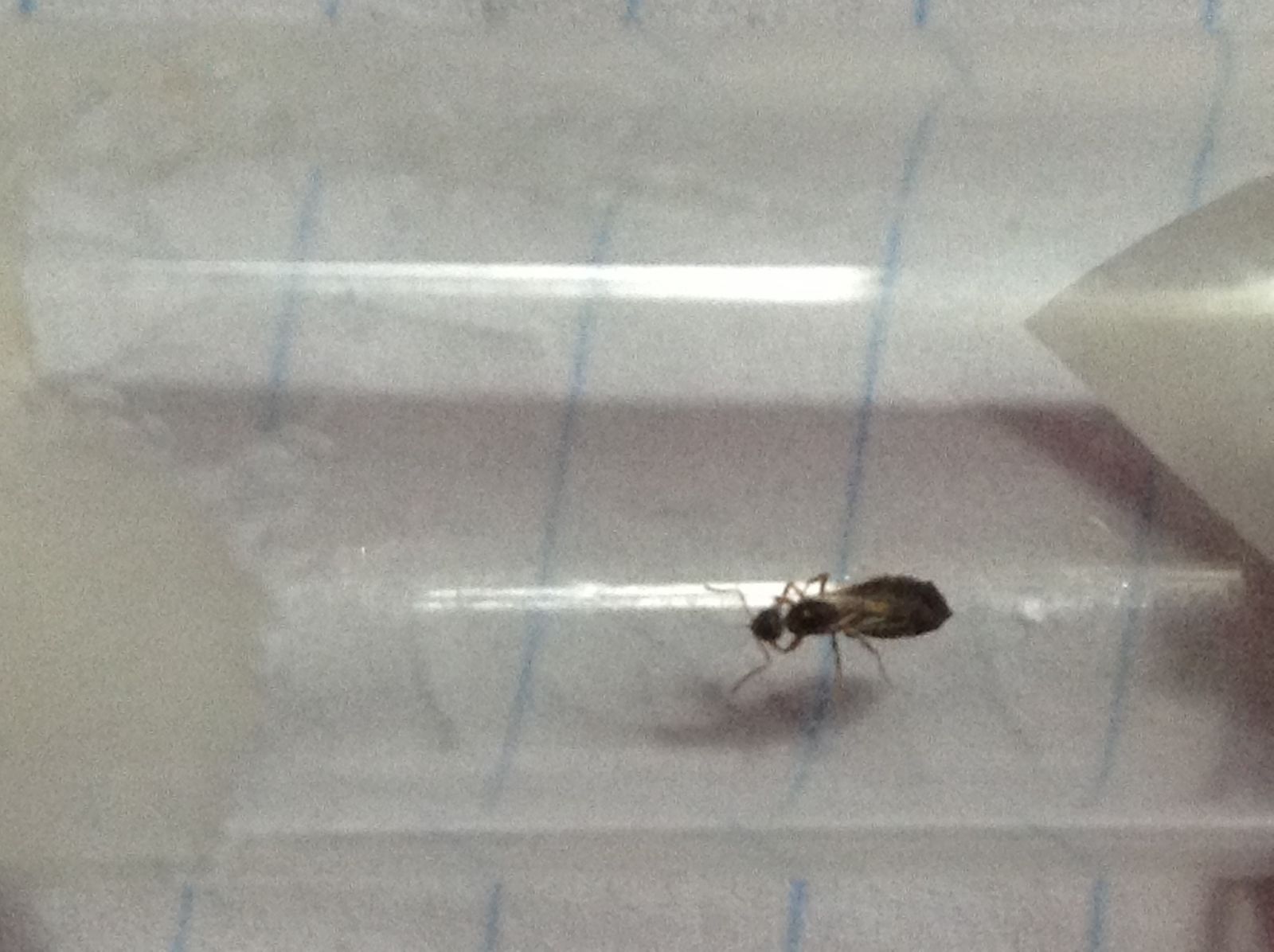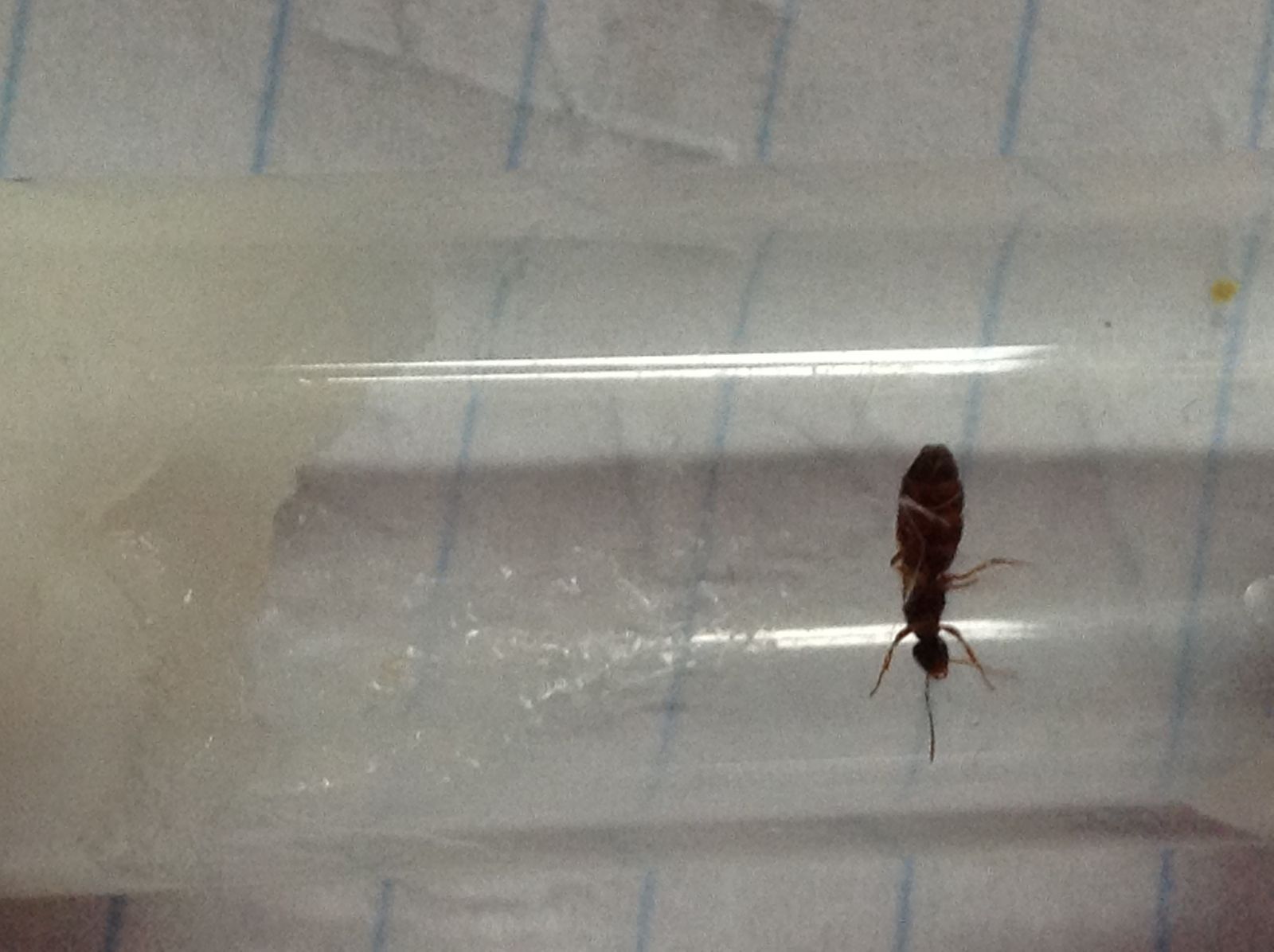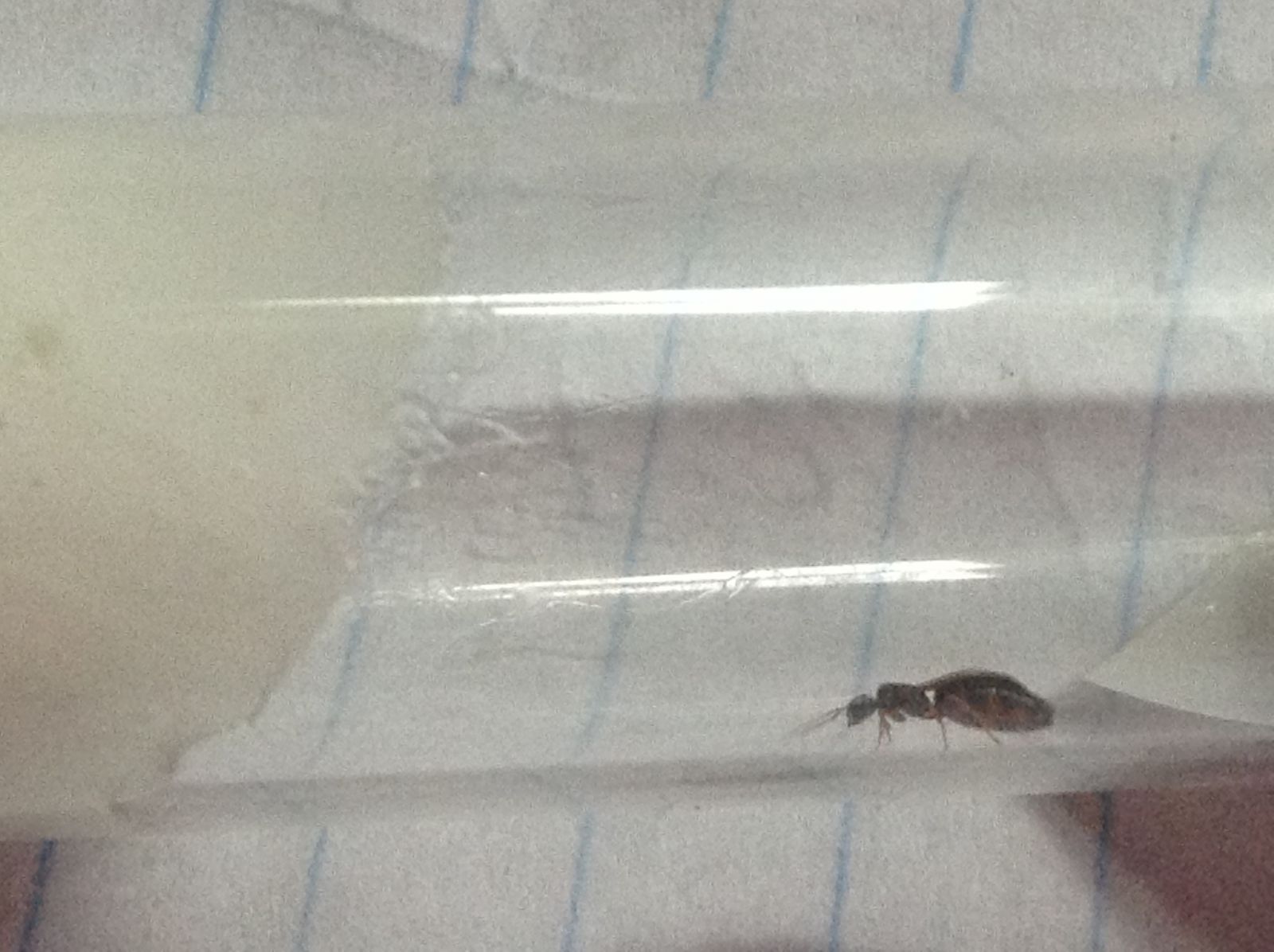Location Of Collection: NY
Date Of Collection: 6/18/17
Habitat Of Collection: In an old rotting log
Length:N/A ( I couldn't really get a good reading, but there is a tape measure in one of my pics)
Coloration: Red legs and black body
Distinctive Characteristics: Loves to curl up, very large gaster relative to her body.
When I found her she still had wings, Since she loves to curl up and has a large gaster , can that be a sign that she is fertile? I could also get better pictures if needed.
